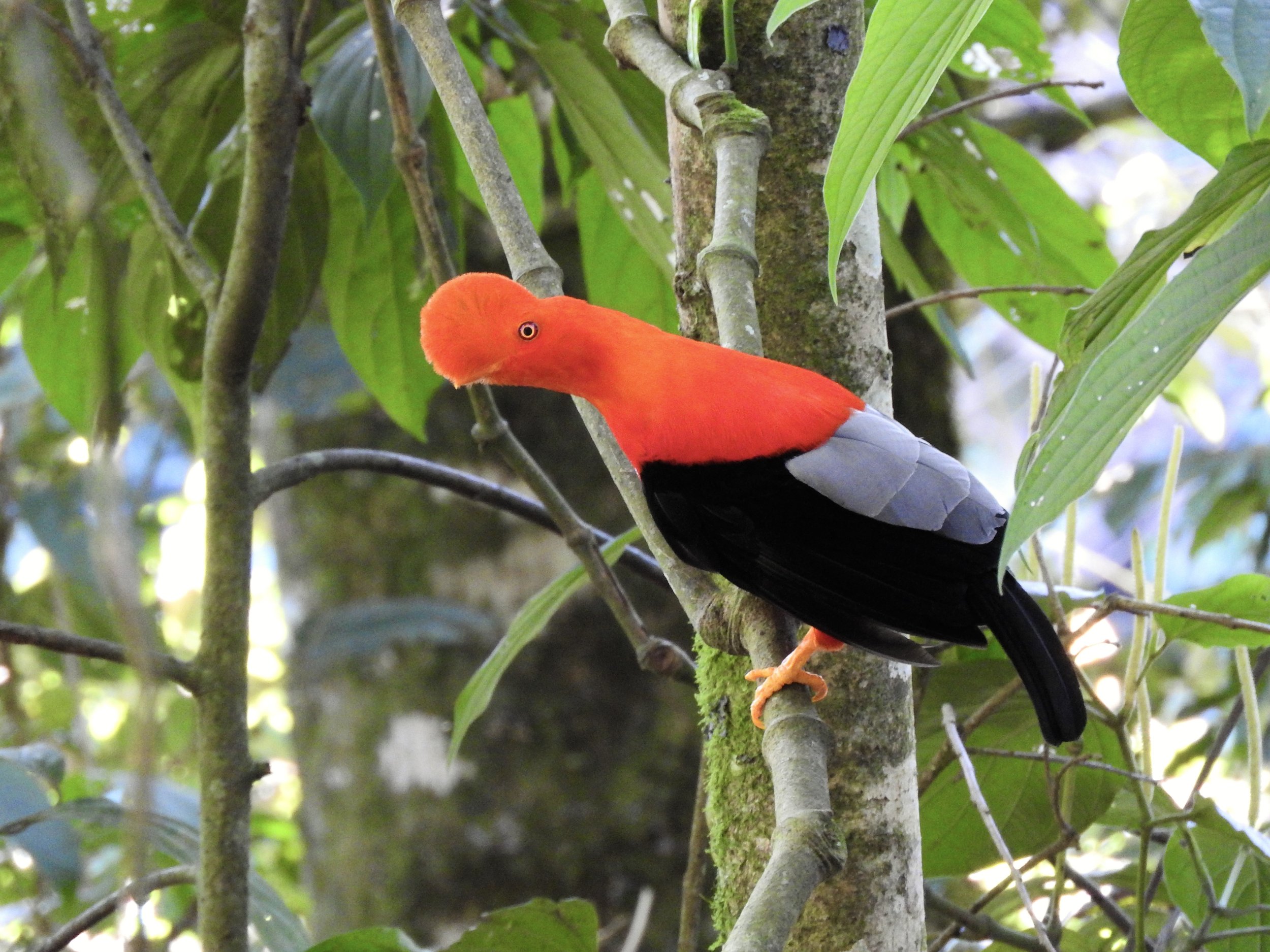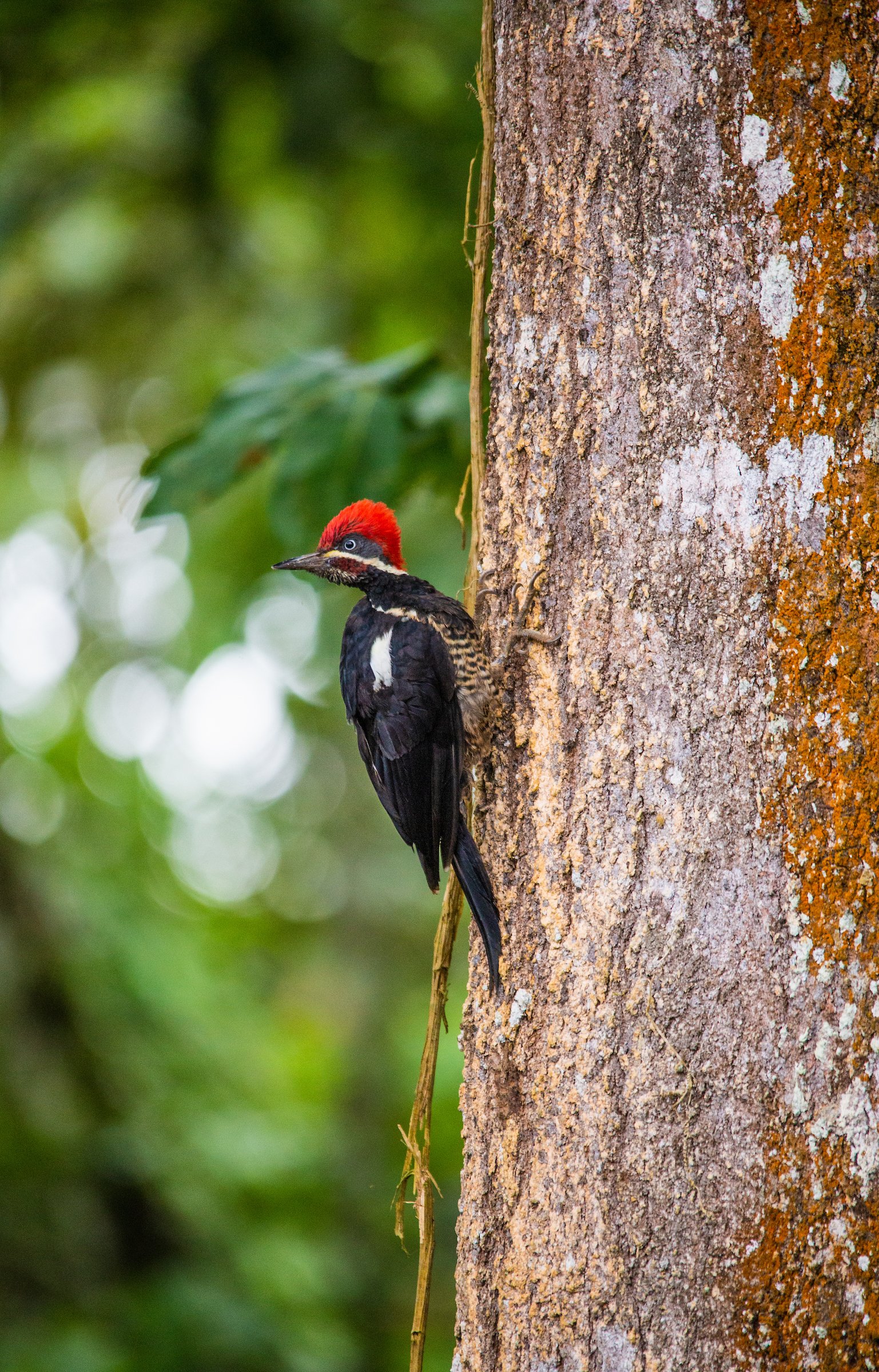Birding in Bogota: The Botanical Garden
This Green Heron was a rare and pleasant surprise for the Bogota Botanical Gardens
The Birders Show host, Chris, takes us through his favorite urban birding location in the Colombian capital of Bogotá, the José Celestino Mutis Botanical Gardens.
To start things off, I should probably come clean now: in terms of the number of species, there are undoubtedly better birding spots in Bogotá than the Botanical Gardens. La Florida Park, for example, is a great place to spot the endemic Bogotá Rail, as well as a host of endemic and near-endemic passerines and migratory waterbirds. In addition, some of the humedales (wetlands) like Cordoba and La Conejera boast more species, while Virrey Park is an excellent hotspot during migration season. Even the adjacent Simon Bolívar Park has a solid claim to be one of Bogotá’s top urban birding locations.
However, for my money, none of these urban birding locations offer such a perfect combination of birds, scenery, tranquility, and biodiversity as the José Celestino Mutis Botanical Garden.
Named after the noted Spanish botanist and Enlightenment figure José Celestino Mutis, the Bogotá Botanical Gardens are a rare haven of peace and calm in an otherwise pretty chaotic city. Although you’d be hard-pressed to forget you’re in the big city completely - the gardens sit under the El Dorado Airport flyway, for one thing - with its winding trails and hidden seating areas surrounded by trees, flowers, ponds, and streams, the Botanical Gardens have a pretty good stab at allowing you to shut out the city for a few blissful hours.
And for urban birders, the garden’s proliferation of native plants, flowers, fruits, and freshwater is the perfect combination to attract a healthy number of resident and migratory species. Although the garden doesn’t open until 8 am during the week and 9 am on weekdays, it doesn’t seem to matter to the birds what time you get there - there seems to be good activity throughout the day from my experience.
There is a small entrance fee of 5.000 COP (plus another 5.000 to visit the newly-reopened Tropicario greenhouse display, which is well worth a look for first-time visitors). Still, it’s worth it compared to the free Simon Bolivar Park next door. Why? One word: dogs! The Botanical Gardens don’t allow man’s best friend to come in, and the birding is much better for it. Also, there are no runners or cyclists, so it’s much easier to bird quietly and mindfully in the botanical gardens.
So how many species can you see in the Bogotá Botanical Garden? Well, the eBird hotspot lists 152 recorded species. However, many of these are rare vagrants. The top eBirder at the site has 57 species (I’m just outside the Top 10 with a respectable 42 and counting).
[eBird Hotspot - Jardin Botanico José Celestino Mutis]
As with many urban birding locations in Bogotá, the best time of year to bird the Botanical Gardens is definitely during migration between October and April, with an especially high number of passage migrants at the beginning and end of the season. During migration season, I would expect to get at least 20 species in a few hours of dedicated birding, and I think the most I’ve had there was 30. Outside migration season, 10-15 is a pretty solid total.
Now, this may not seem like that many species in the country with more birds than any other, but at 2,600 masl, Bogotá isn’t as species-rich as lower-altitude cities like Cali or Medellin, so 15-20 species at one location is a good morning of birding.
Some species are so abundant that you can practically mark them down on your list before you even start birding: Great Thrush is everywhere, as are Eared Doves and Rufous-collared Sparrows. The melodious call of the Yellow-backed Oriole is a near-constant soundtrack, and with patience, they can usually be seen as well. Keep an eye on the sky, especially on sunny days, for Brown-bellied Swallows and Black Vultures. Sparkling Violetears call constantly and are regularly seen feeding on the many hundreds of flowers.
The first thing you’ll see when you enter the main gate are two adjacent lakes bisected by a covered bridge. The weedy fringes of these lakes are excellent for Purple Gallinule and Striated Heron, and there’s usually a Great Egret posing elegantly by the water. A Greater Ani can often be seen in the willow trees by the lake, and that seems to be a good spot for migrant Yellow Warblers in season too. The lake was also home to a Green Heron once during migration: a rare species for the Andes, and a bit of a superstar in the Bogotá birding scene for the period that it stuck around.
The Green Heron certainly wasn’t shy when it came to visit Bogota!
The best birding in the Botanical Gardens is undoubtedly in the area known as the paramo ecosystem. This winding, sloping trail of little paths through native Andean vegetation attracts the highest proportion of species, mainly because the plants are the closest match to the bird’s actual native habitat. It’s also one of the most tranquil corners of the park, which certainly helps. There are also two observation towers that get you a bit closer to eye level with the trees.
One of the small observation towers, with a birder for scale!
This area is perfect for native Andean species like Rufous-browed Conebill, White-throated Tyrannulet, and Mountain Elaenia. Both Rusty and Black Flowerpiercers are also regular here, and it’s an excellent spot to get a look at the orioles mentioned above. Keep an eye on the cecropia trees for Palm and Blue-gray Tanagers, as well as Summer and Scarlet Tanagers in migration season. Another migrant often seen during passage is Broad-winged Hawk (they seem to like perching on the tall palms that can be seen from the observation towers).
Both Summer and Scarlet Tanagers abound in migration season
The dense tangles of vegetation by the path are great for migrant warblers and thrushes in season. Blackburnian and Black-and-white Warblers are pretty common, along with Swainson’s Thrush and Red-eyed Vireo. Other, slightly less regular, visitors include Canada Warbler, Tennessee Warbler, Sulphur-bellied Flycatcher, Gray-cheeked Thrush, and the occasional Veery. There was even once a photographic record of Chuck-will’s-widow, so stay alert; it’s entirely possible to get an absolute Colombia mega while birding in the Botanical Gardens!
Aside from the paramo area, most birding takes place in the woods along the main path. Here the trees are taller, making for slightly trickier birding, but those woodlands seem to be preferred by some species, including Canada Warbler and some migrant thrushes. It’s also well worth taking time out from your birding to explore the herb gardens, vegetable gardens, Tropicario, and rose gardens (where White-bellied Woodstar can often be seen zooming around like a tiny little nectar-fuelled helicopter).
So, if you’re a birder and you find yourself with a few hours to spare in Bogotá, you could do a lot worse than hightail it right for the Botanical Gardens. You won’t regret it (and make sure to let me know if you’re going to go, I’ll never pass up the chance to visit)!











